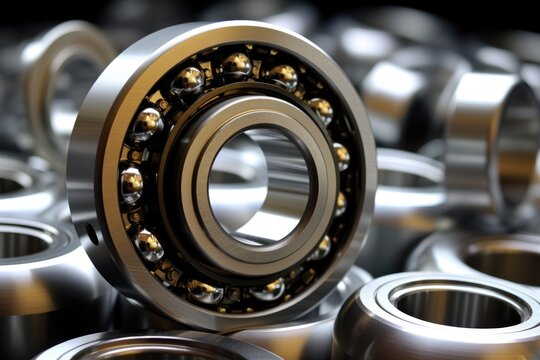Understanding Bearings Guide
Understanding Bearings Guide
Blog Article

Imagine a world where machines run smoothly, efficiently, and silently. This is not just a dream; it’s the reality made possible by the right types of bearings. These small yet powerful components are fundamental to various applications, from household appliances to massive industrial machinery. With numerous bearing types available, understanding their functions and applications is crucial for anyone involved in engineering or maintenance. For an in-depth look at these components, you can visit https://www.aubearing.com/bearing-types-you-should-know/.
Understanding Bearings
Bearings are mechanical elements that facilitate smooth movement between two surfaces. They reduce friction, support loads, and ensure precision in movement. The right type of bearing can enhance the lifespan of equipment and improve performance, making it essential to choose wisely based on specific needs.
Types of Bearings
There are several types of bearings, each designed for particular applications. Here’s a closer look at some of the most common ones:
Ball Bearings
Ball bearings are one of the most widely used types due to their versatility. They consist of balls that allow for smooth rotational or linear motion. Found in everything from skateboard wheels to electric motors, they are excellent at handling both radial and axial loads. Their low friction characteristics make them ideal for high-speed applications.
Cylindrical Bearings
Cylindrical bearings offer a larger contact area than ball bearings, making them suitable for heavy loads and high speeds. They are often used in applications like automotive engines and conveyor systems. Their design allows them to handle both radial and axial loads effectively.
Tapered Roller Bearings
These bearings are designed to accommodate heavy radial and axial loads. They consist of tapered rollers that form a cone shape, allowing them to distribute loads evenly. Tapered roller bearings are commonly found in vehicles, particularly in wheel hubs and transmissions.
Thrust Bearings
Thrust bearings are specifically designed to handle axial loads. They are utilized in equipment like gearboxes and turbines, where lateral forces are prevalent. Their unique design allows them to provide stability and support, ensuring smooth operation under heavy loads.
[IMAGE]
Selecting the Right Bearing
Choosing the correct bearing type is critical for optimal performance. Factors such as load capacity, speed, environment, and the type of movement must be considered. For instance, in high-temperature applications, bearings made from specialized materials may be necessary to withstand extreme conditions. Similarly, in environments subject to contamination, sealed or shielded bearings may be advisable to prolong bearing life.
Maintenance and Care
Regular maintenance is vital to ensure bearings perform at their best. This includes proper lubrication, regular inspections, and timely replacements when wear occurs. Neglecting bearing maintenance can lead to premature failure, resulting in costly downtime and repairs.
Conclusion
Bearings play an essential role in the functionality of machinery across various sectors. Understanding the different types of bearings and their applications can lead to better choices in engineering and maintenance practices. By selecting the right bearing for specific applications and maintaining them properly, you can significantly enhance the efficiency and lifespan of your equipment.
Report this page